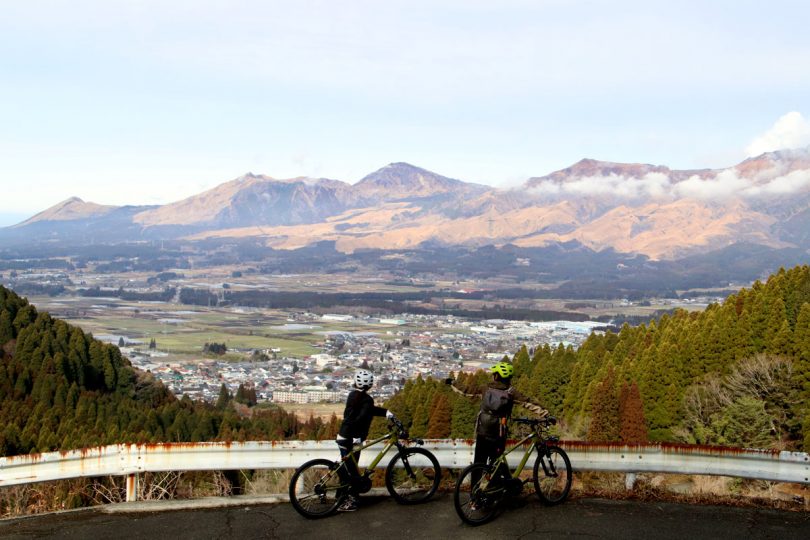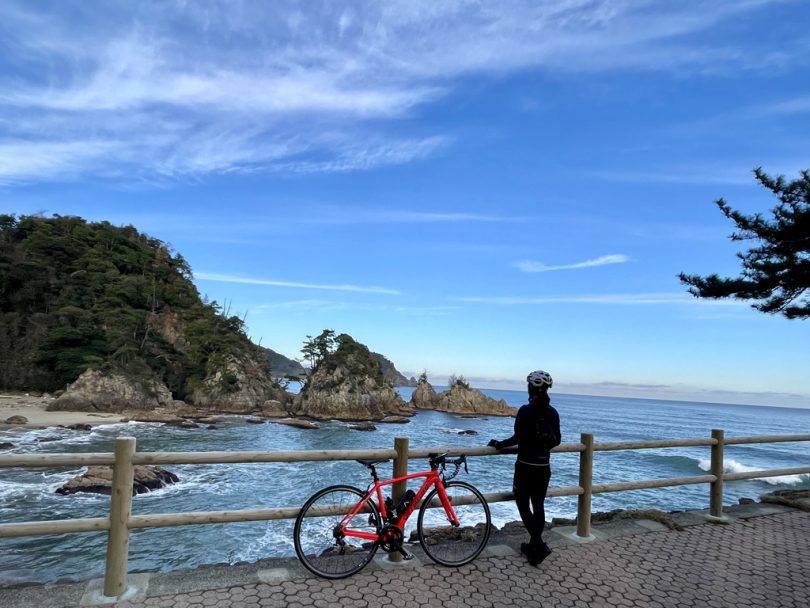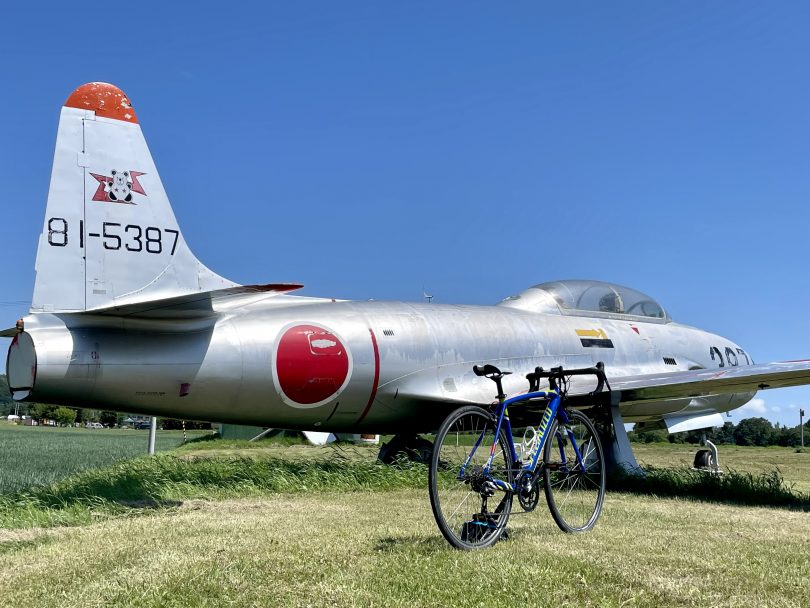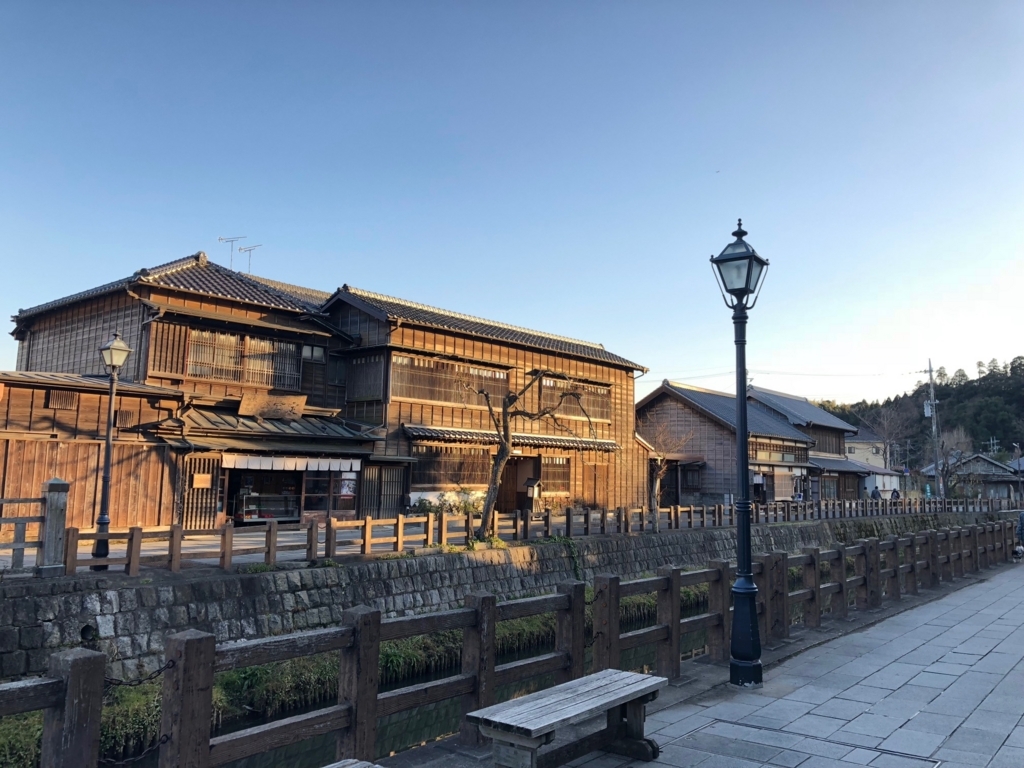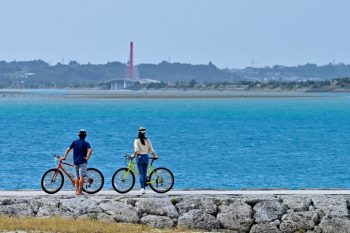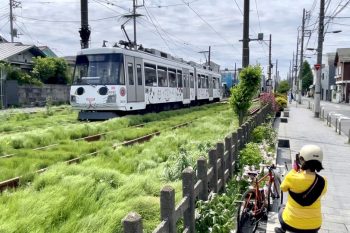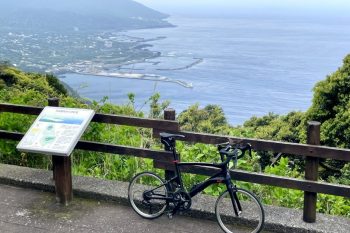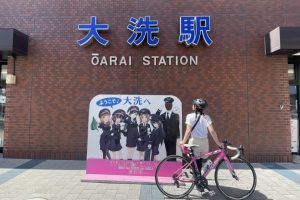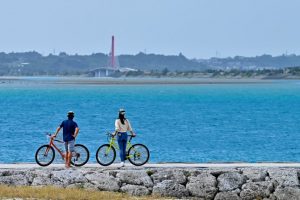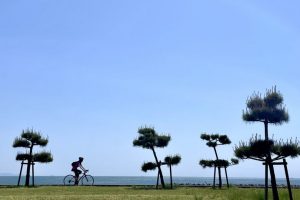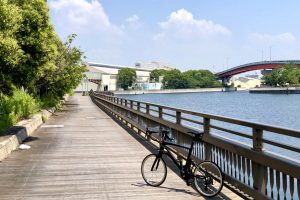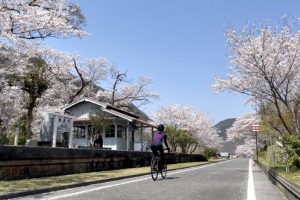With the arrival of spring comes warmer weather and a more comfortable cycling season.
It may be a little early, but I’m getting a head start on the summer mood in Okinawa! So, wearing a short-sleeved jersey, I rode about 45km around Nanjo area of the main island of Okinawa.
I have also included some tips for renting a bicycle for your trip. Let’s get started!
Contents
- Bring or Rent a Bicycle? Let’s Plan Your Trip!
- Road Bike Rental in Naha City
- Valley of Gangala : Experiencing Ancient Human History in a Mysterious Forest:
- Lunch on the Beach at Local Island Tempura in Obu Island
- Local Miibaru Beach to a Café in the Forest
- Cape Chinen – Nirai Kanai Bridge up and down
- To Naha City via Route86
- Points to Keep in Mind When Renting a Bike
- Course Introduction
- Summary
Bring or Rent a Bicycle? Let’s Plan Your Trip!
Although I have cycled to Ishigaki Island and Miyako Island in the past, this is my first trip to the main island of Okinawa. I want to see the whole island in three days and two nights! But the weather forecast clouds are doubtful, so I made the following plan.
■Day 1
9:00 a.m. : Departure from Itami (Osaka International) Airport
11:00 a.m. : Arrive at Naha Airport
Afternoon : Walking around Kokusai-dori Avenue and Shurijo Castle by Yui Rail and on foot
■Day 2
Full-day bus tour to Manzamo Beach and American Village in the central region, Ocean Expo Park (Churaumi Aquarium) in the northern region, and other major tourist attractions
■Day 3
Cycling around the southeast area by rental road bike
6:00 p.m. : Departure from Naha Airport
8:00 p.m. : Arrival at Itami Airport

Since I was traveling alone, I did not rent a car but used public transportation and bus tours to reduce transportation costs.
I stayed at a hotel near Makishi Station on Yui Rail Line and along Kokusai-dori Avenue, which was convenient for dining and shopping for souvenirs. Since rain was forecast for days 1 and 2, I did not bring my bicycle from Osaka and reserved a road bike at a local bicycle rental shop in hopes of riding on day 3.
If you plan to spend several days cycling, such as whole around the island or around the southern part of the island, it is a good idea to bring your bike by airplane.
Road Bike Rental in Naha City
Unfortunately, I had rain on days 1-2, but on the last day of the trip I managed to have cloudy skies. I decided to go for a ride. This time, I used Ryukyu Rental Cycle, a 3-minute walk from Makishi Station. The shop is run by “Cycle Works,” which also offers bike messenger service on the main island of Okinawa.
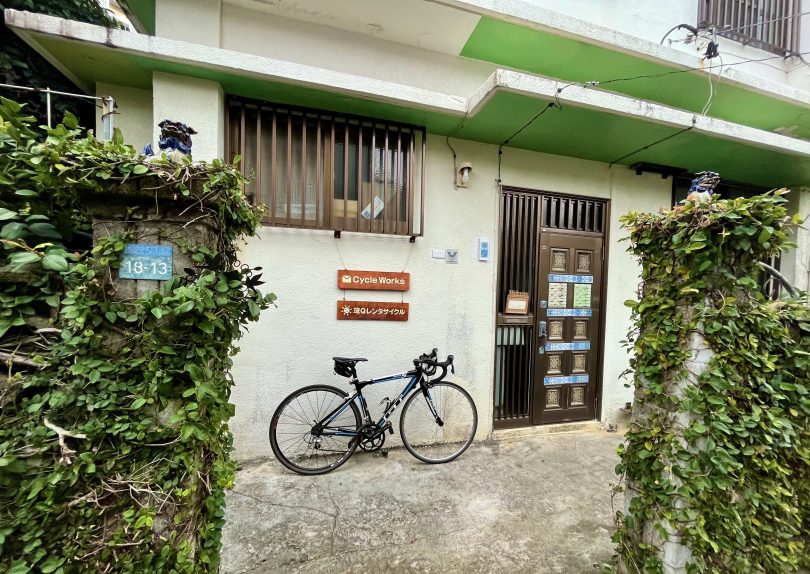
There are three types of rental bicycles to choose from: mini velo, cross bike, and road bike. For mid- to long-term visitors, rentals are available in weekly or monthly increments.
For an additional fee, they can also be delivered to and collected from hotels and other designated destinations.

Not only tourists, but also professional baseball players and college baseball players often rent a bicycle here to explore the island during their camps.
I chose a road bike because I planned a 45km course with many ups and downs, mainly in the southeastern part of the island, starting and ending at the shop. Mini velos or cross bikes would also be fine if you just want to explore Naha City.
Valley of Gangala : Experiencing Ancient Human History in a Mysterious Forest:
Departing from Ryukyu Rental Cycle shop at 9:30 a.m, I headed for my first destination, “Valley of Gangala” in Nanjo City, about 12km away.
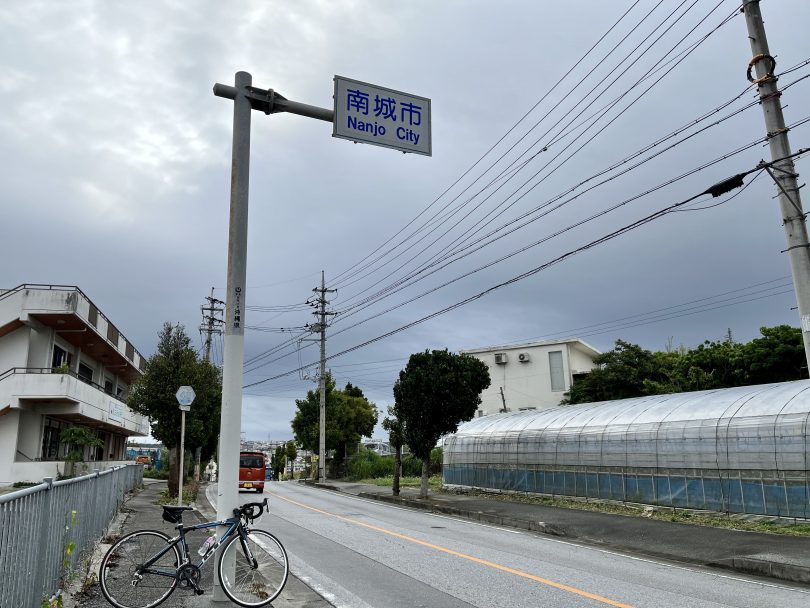
Following the map and advice given by Mr. Shuhei Shimomura, the representative of Ryukyu Rental Cycle, l headed for Nanjo City along Route507 via Okinawa University.
There are many signs along Route507 for Valley of Gangala and Okinawa World, which is also located there, so you can proceed without getting lost.
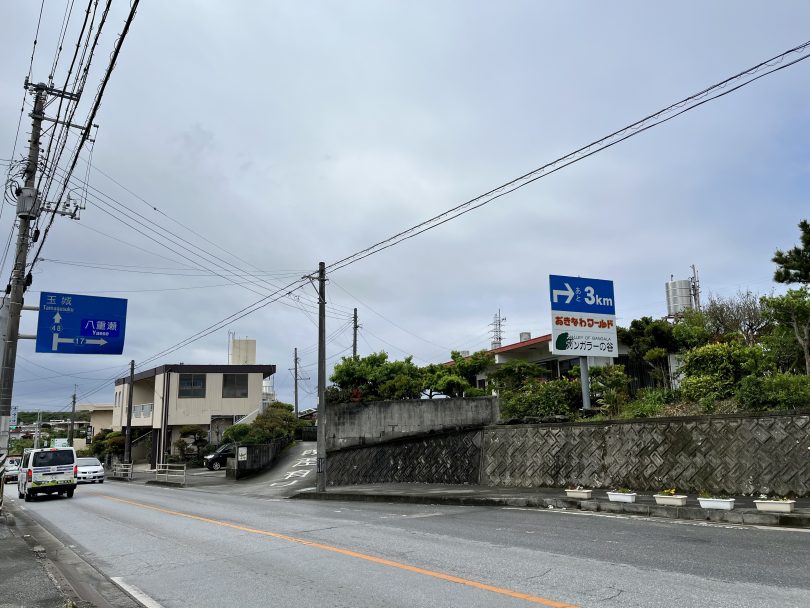
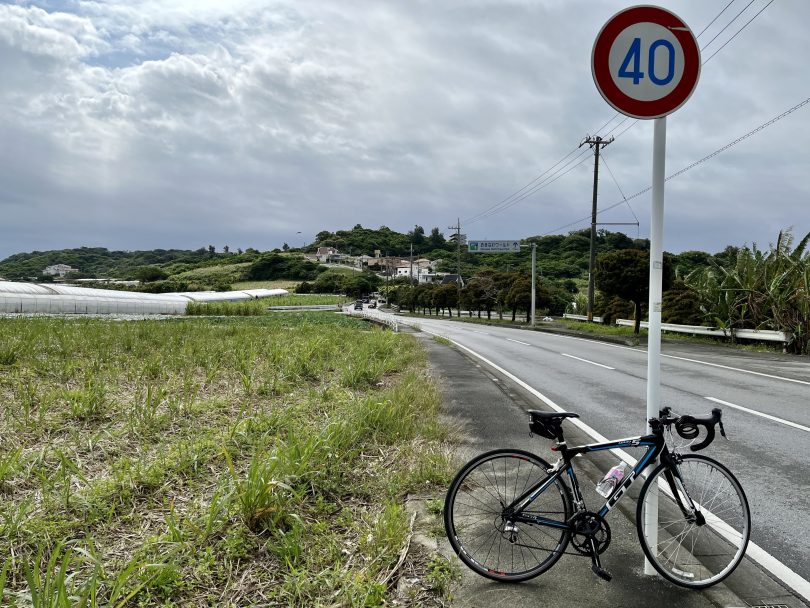
Valley of Gangala is a valley formed by collapsed limestone caves and opened to the public as a tourist attraction in 2008.
This is a spot that can be visited only by guided tours that require advance reservations. It takes 80 minutes to walk slowly for about 1km through the primeval forest and limestone caves, starting from the caves, while listening to the explanations of expert guides.
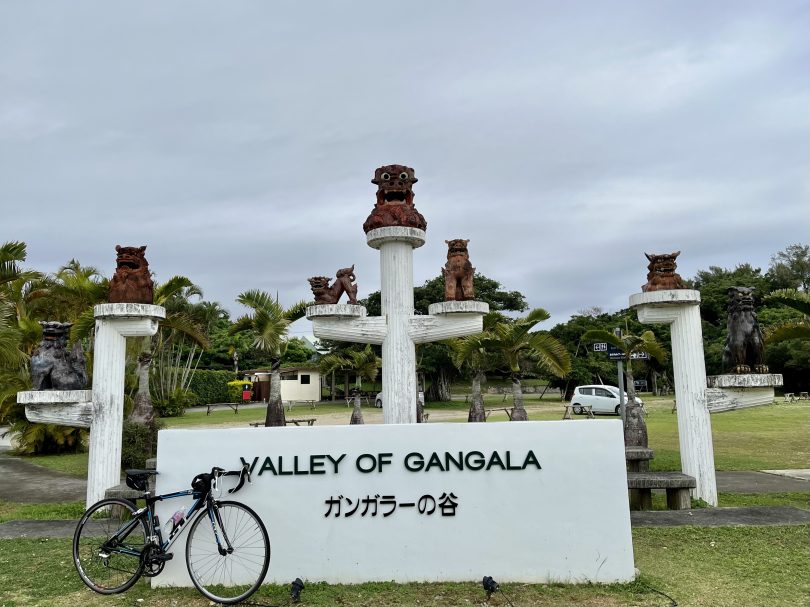
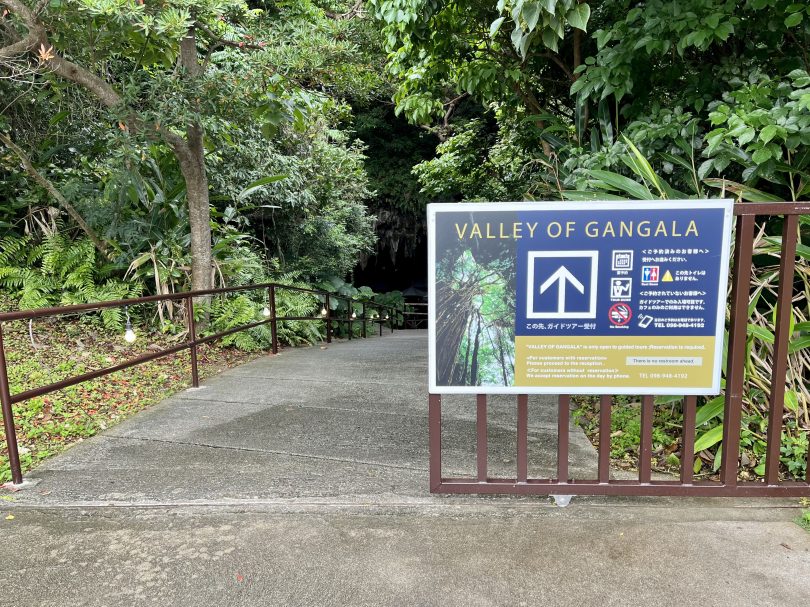
Cave Café, which is the starting point of the guided tour and available only before the tour, is a must-visit spot.
The coffee, dripped with the cave’s underground water, has a refreshing taste. I was already satisfied that it was worth pedalling my way up and down here for this.
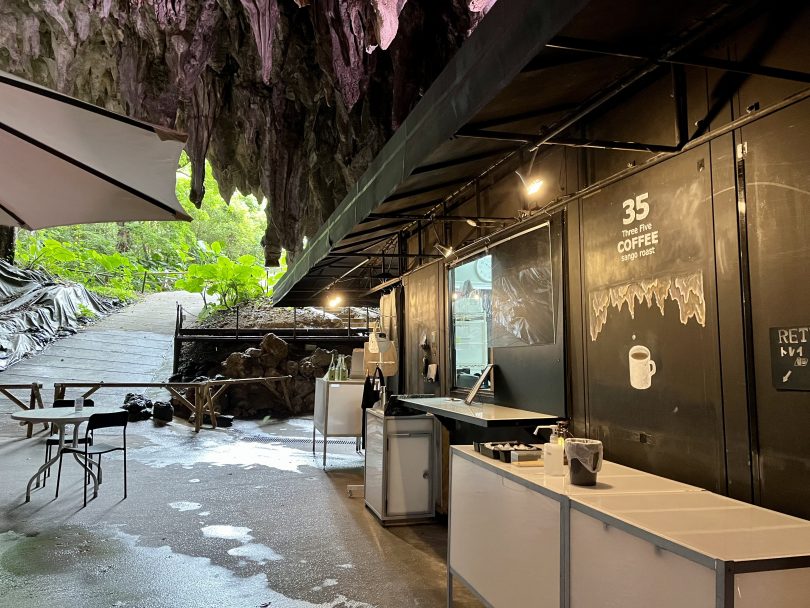
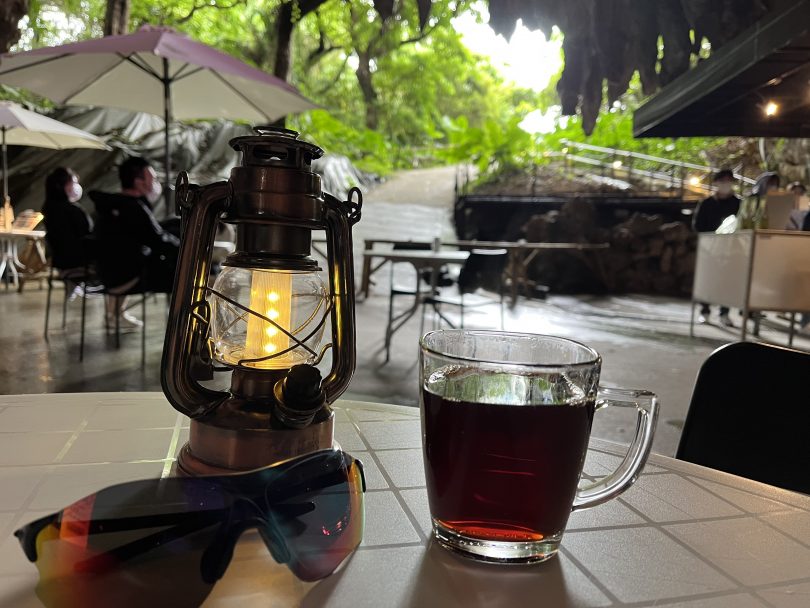
The guided tour starts at Cave Café and takes you around the subtropical forest, multiple caves, and a tree terrace.
The guide will show you many of the creatures that mimic the thick green forest that you would definitely miss if you were just walking around on your own.
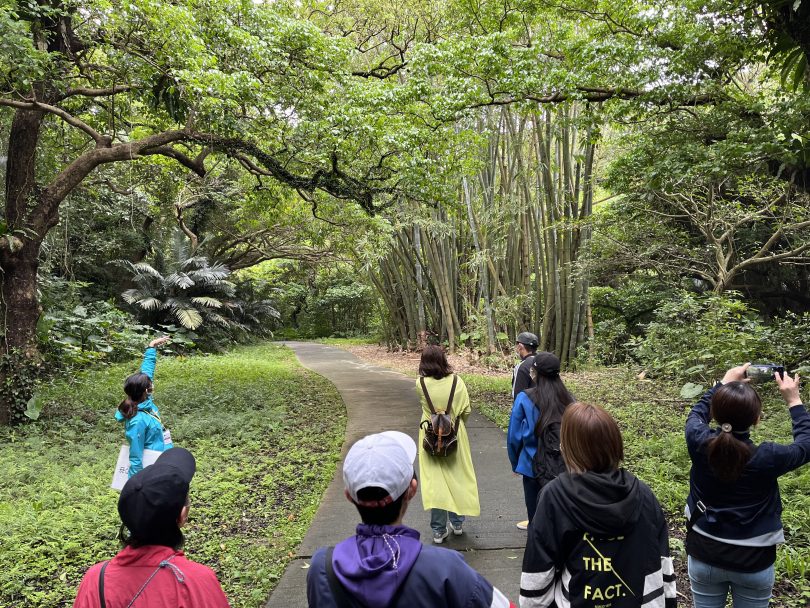

Can you see the stick insect in the photo above?
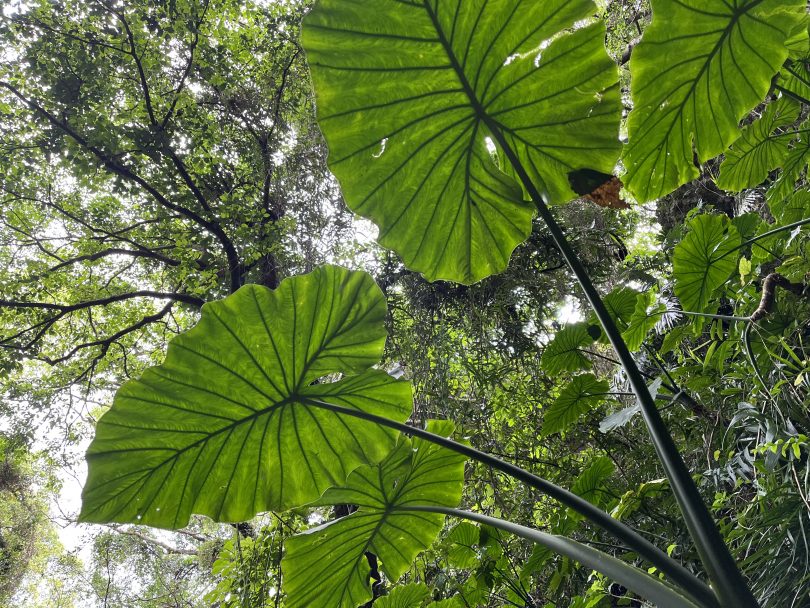
The dark green forest seems to give you power just by walking through it.
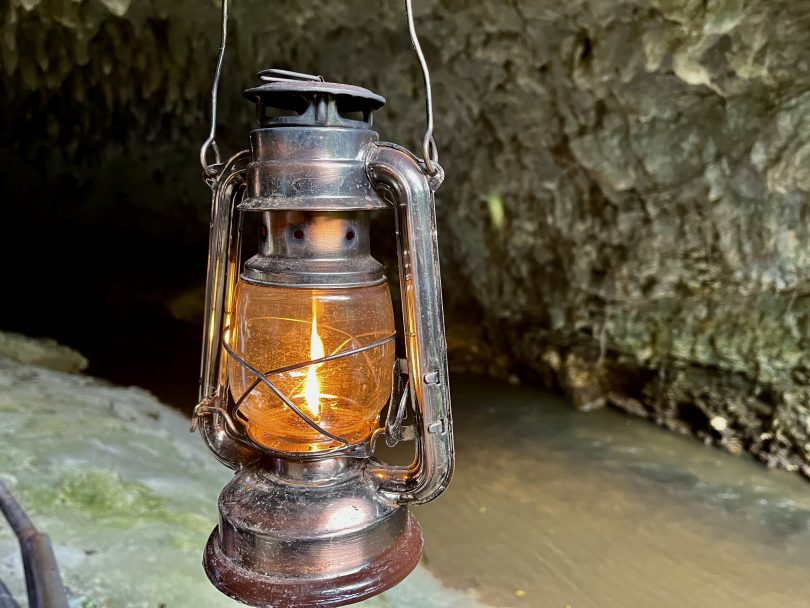
In the dark limestone caves, we proceed with gas lanterns in hand.
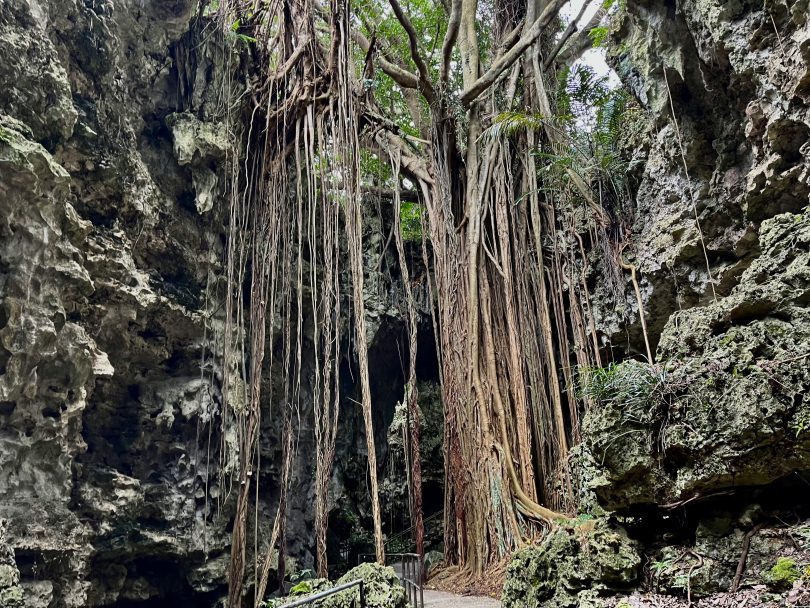
The huge mangrove trees reminded me of those seen at the Angkor Wat ruins.
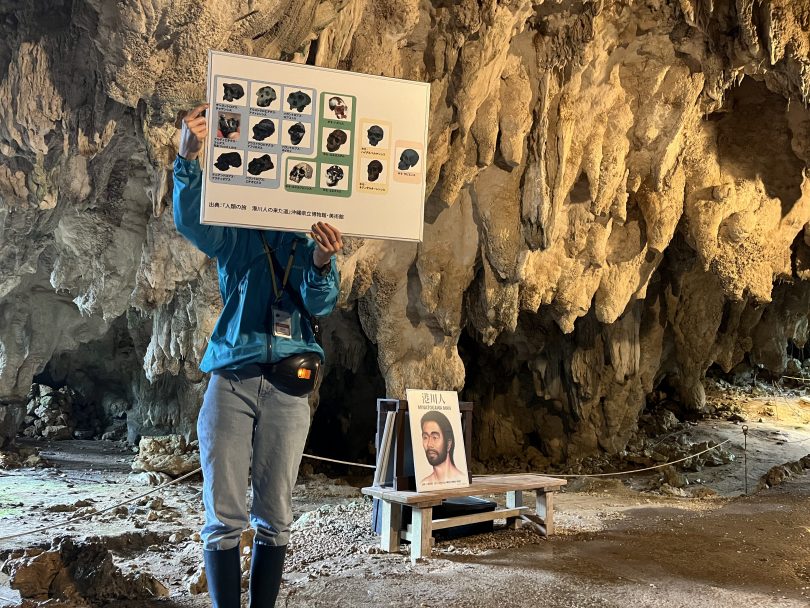
Valley of Gangala is close to where “Minatogawa people,” who are said to be the ancestors of the Japanese, were discovered, and since it is an ideal place to live during the Paleolithic period, it has been the subject of research since 2007 and excavations are still ongoing.
The guide explains about Minatogawa people and the excavation in detail using panels, so visitors can learn about the history of the area.
Lunch on the Beach at Local Island Tempura in Obu Island
It was just noon when I finished the tour of Valley of Gangala.
From here, head south along Obu Highway for about 4km to Obu Island, the remote island in Nanjo City.
The island is accessible by foot or bicycle via Obu Bridge.
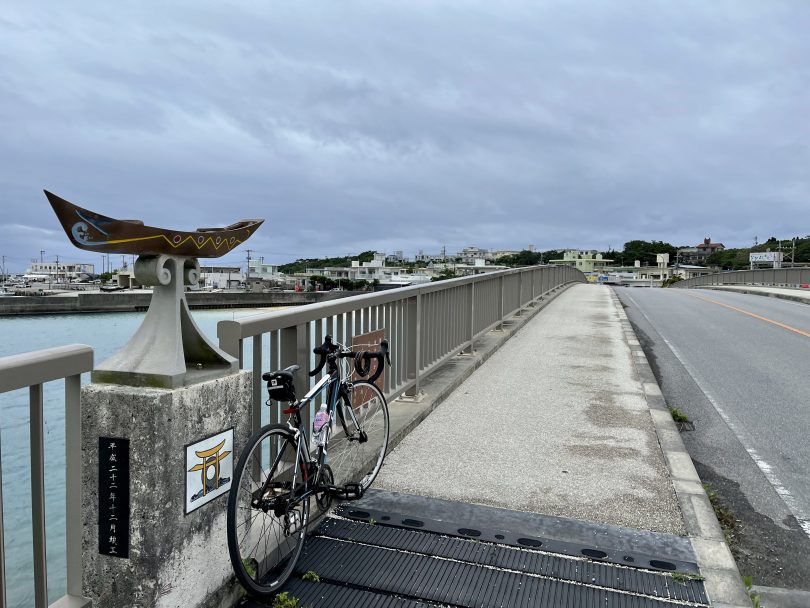
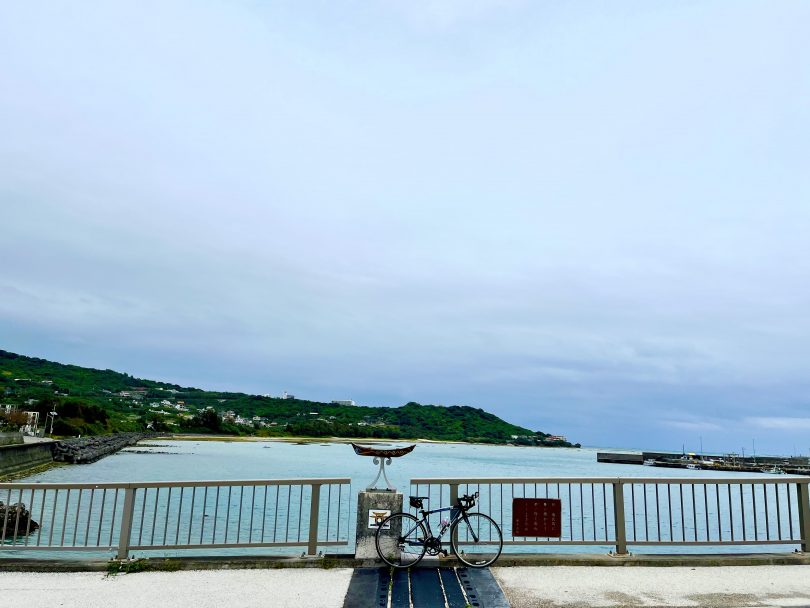
Just across Obu Bridge is Nakamoto Fresh Fish Tempura Shop.
“The island’s local tempura is delicious!”, Mr. Shimomura recommended it to me, so my expectations were high.
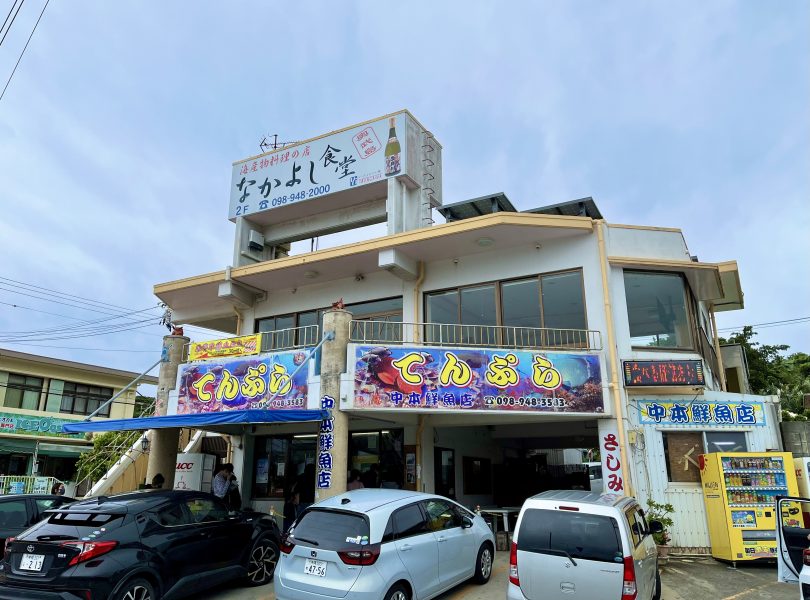
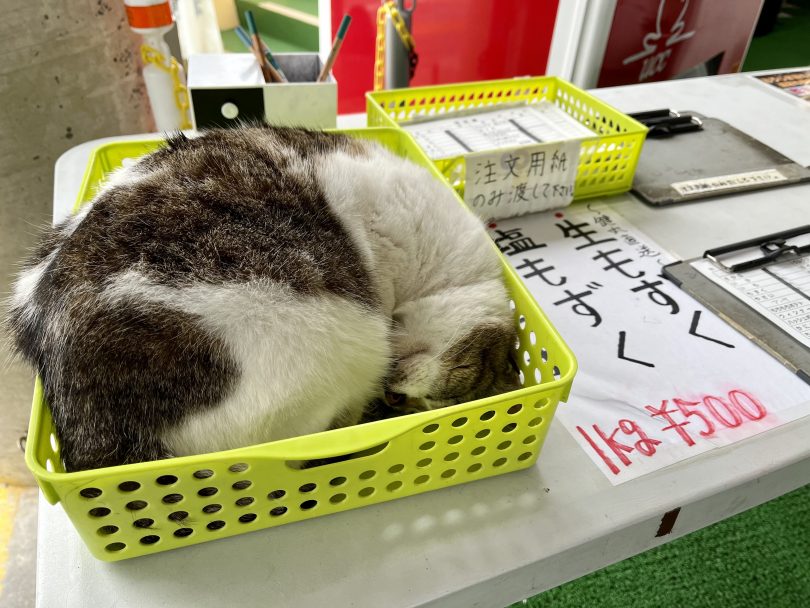
After waiting in line with a mix of tourists and locals, I ordered take-out “aasa” (sea lettuce) and beni-imo (red sweet potato) tempura, which are unique to Okinawa, and went to the beach in front of me with the bike.
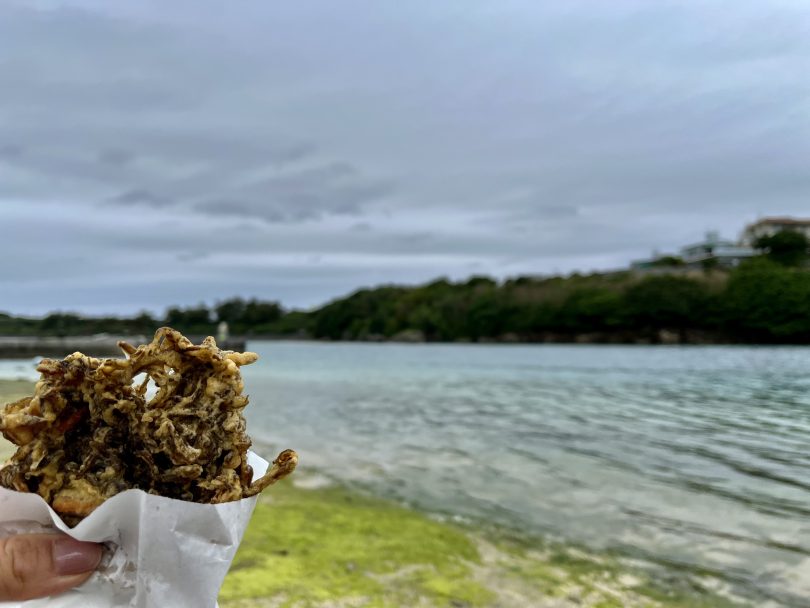
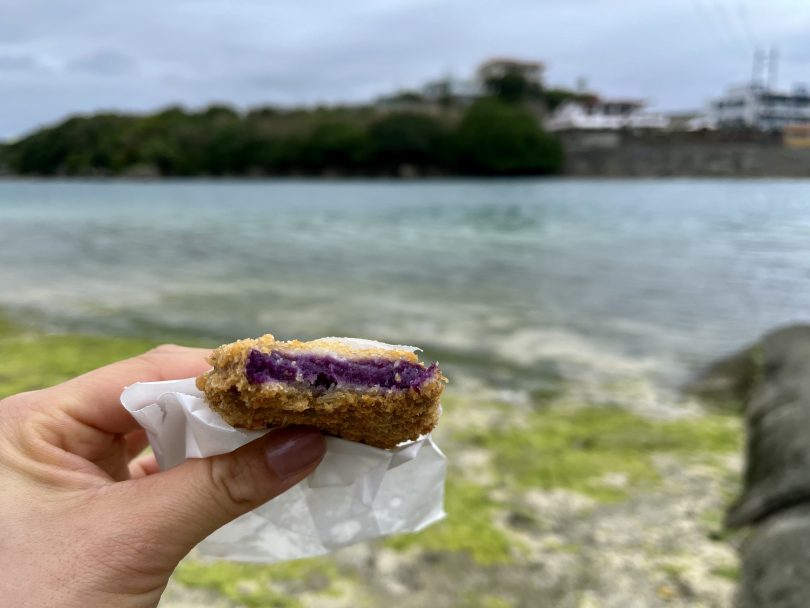
I enjoyed lunch while watching the sea and fishermen and enjoying the beach breeze.
The sea lettuce tempura had a mysterious and sticky texture. The red sweet potato tempura had a simple sweetness different from that of normal sweet potatoes.
The batter was thick and slightly sweet, different from the crispy tempura we eat in Honshu, making it a memorable taste of the trip.
Local Miibaru Beach to a Café in the Forest
After filling up, cross Obu Bridge again to return to the main island and ride along the seaside road.
Along the road there are bougainvillea trees blooming brightly against the walls of buildings. In Honshu island, these flowers can be seen only in the greenhouses, but in subtropical Okinawa, they grow wild.
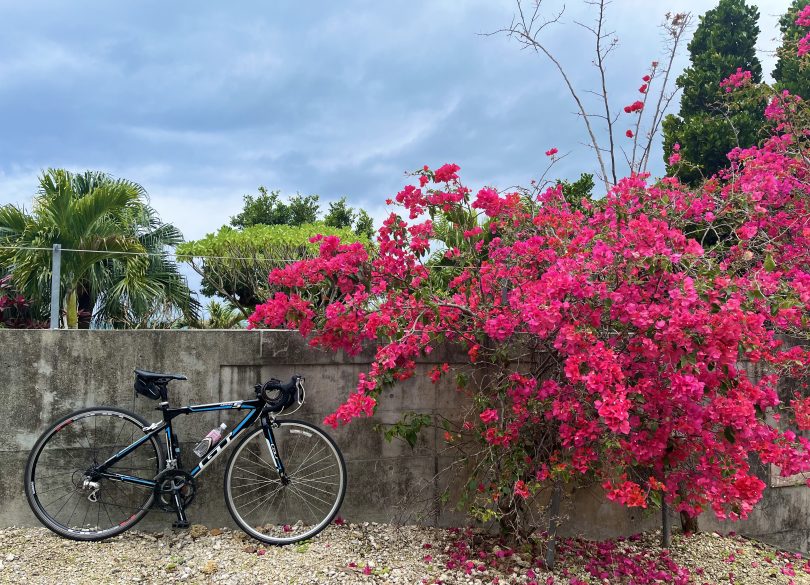
After cycling about 2.3km, the view suddenly opened up to reveal the marine blue cove of Miibaru Beach.
Hyakuna Beach is also adjacent to Miibaru beach about 750m ahead. It is different from the resort beach with a hotel at Manzamo, where I stopped on the bus tour the day before, and has a cozy, local, and relaxed atmosphere.
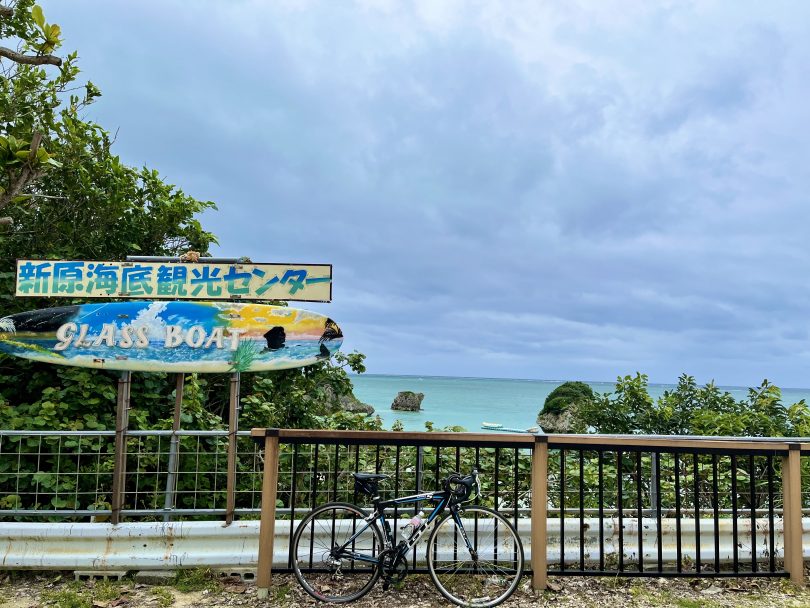
From here, the road climbs up a slight slope to Route 301, and the destination is “Café Mori-no-Terrace” located on high ground.
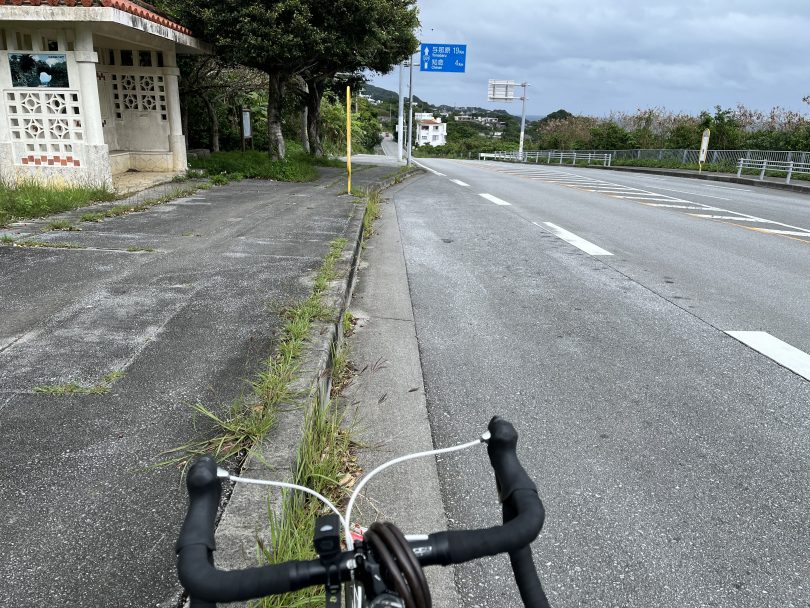

“Café Mori-no-Terrace” is a garden and gallery café with about 1,1570㎡ forest in Chinen Danchi (multi-unit apartments). Follow the arrow through the forest garden and down the stairs to find a building with a terrace.

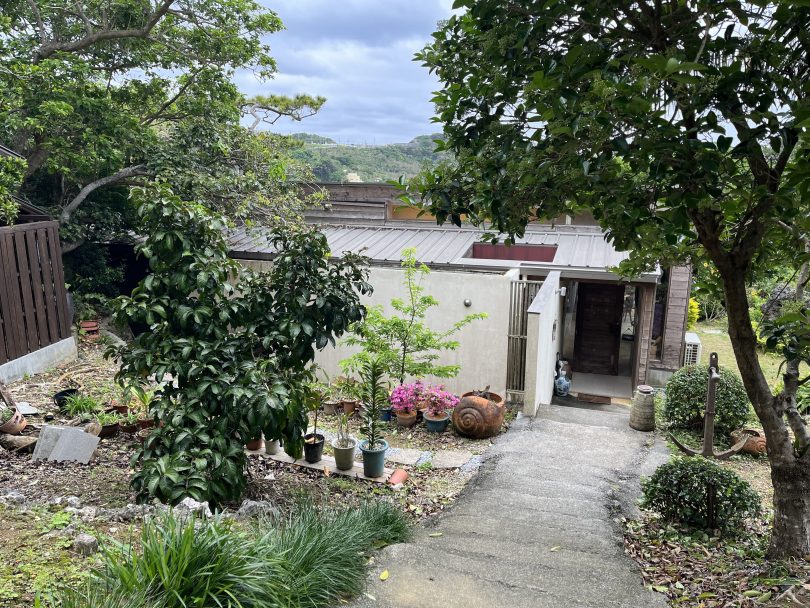
Several groups of female travelers, may be college students, were chatting inside, probably on a spring break trip.
As expected, I was the only one who had come this far by bicycle, but I relaxed on the terrace and enjoyed a cup of coffee and a brown sugar Swiss roll while gazing out at the forest and ocean stretching out in front of me.
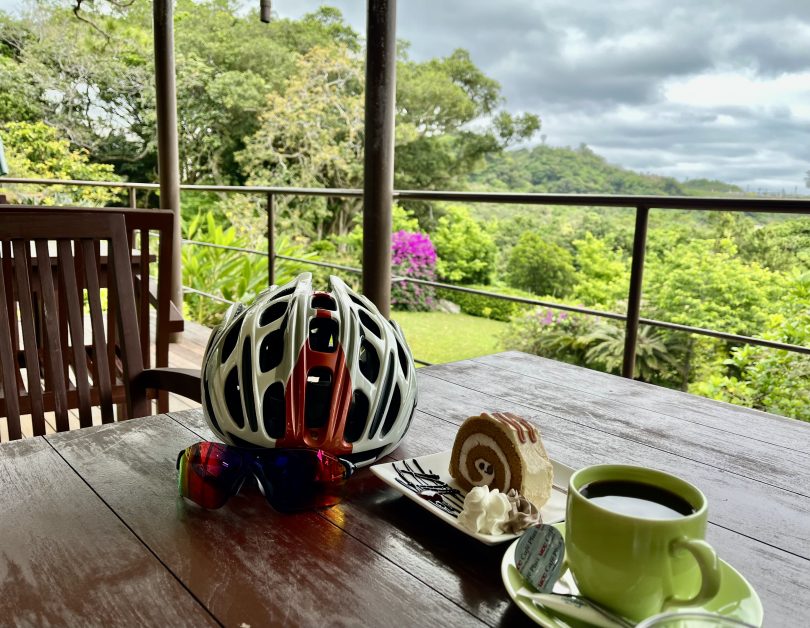
Cape Chinen – Nirai Kanai Bridge up and down
About 1.8km from Café Mori-no-Terrace, I descended all the way down to Chinenmisaki Park. From the park, you can see the dynamic Pacific Ocean, nearby Kudaka Island and Komaka Island.
You can also stop by the nearby power spot, Sefa Utaki.

If I had more time, I would have liked to continue on Route 331 along the coast back to Naha city, but considering the time of my flight home, I decided to climb Nirai and Kanai bridges and return inland along Prefectural Route86.

Nirai and Kanai bridges are located on the way down from the Tsukishiro direction on Prefectural Route86 to National Route331, and are 660m long and 80m high, with a large curve toward the sea.
“Nirai Kanai” means “an ideal world beyond the sea.” Usually, guidebooks recommend taking the downhill route because the view of the ocean from the bridges is spectacular. However, if you like hills, I recommend that you climb up from the bottom.
Although it looks tough at first glance from Cape Chinen, it gently makes a large loop, and it is about 1.7km from Yoshitomi intersection at the entrance to the observatory.
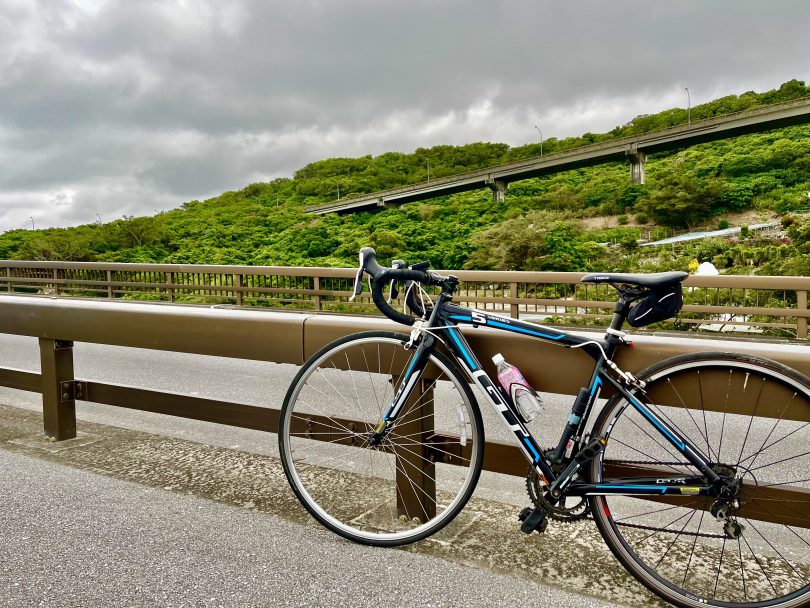
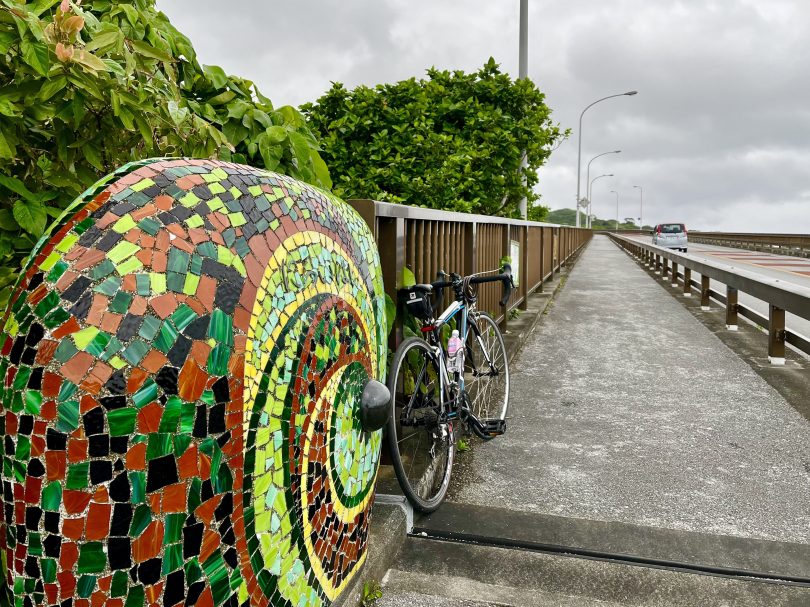
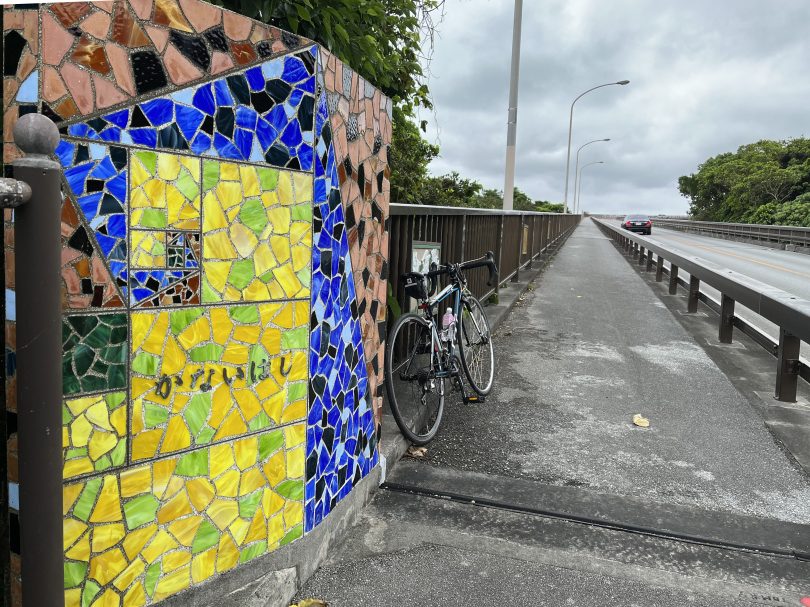
You will feel a sense of accomplishment when you see the curve of the two bridges, Cape Chinen and the Pacific Ocean from the goal of the observatory at the end of Nirai and Kanai bridges and through the tunnel.
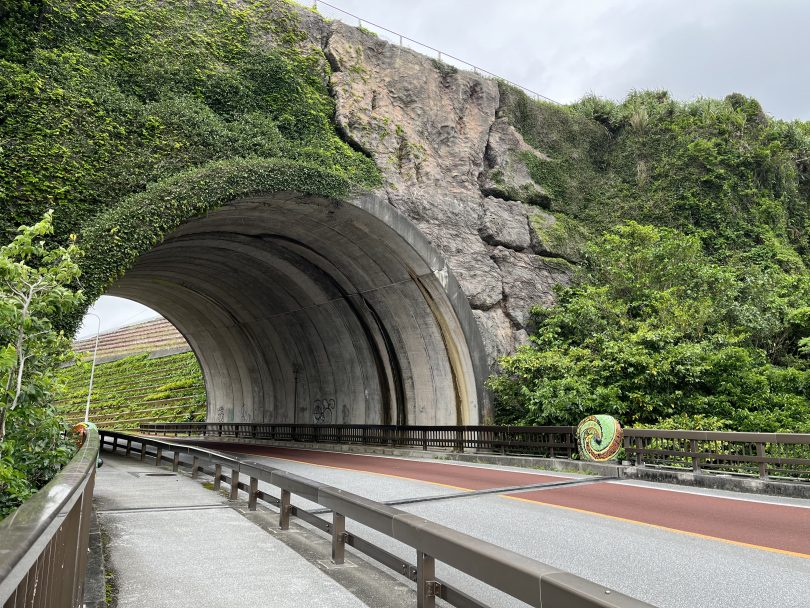


To Naha City via Route86
From Nirai Kanai Bridge Observatory, return to Naha City via Prefectural Route86 for about 18km.
There is a bicycle and pedestrian path in the section leading from the observatory, and thankfully there are few traffic lights until you enter Naha City.
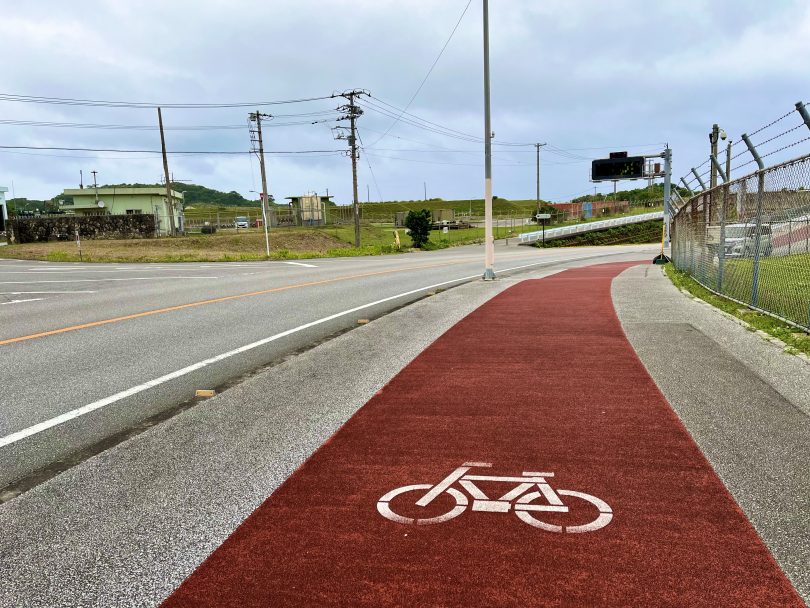
Convenience stores, mainly LAWSON and Family Mart, are scattered along the prefectural road, which are helpful in case you run out of drinks or rations on hand. Contrary to the weather forecast, the rain and wind started to pick up, so I took shelter from the rain at a convenience store along the way and got an energy jelly.
From Okinawa Prefectural Archives at the 13km point, the remaining 5km was via Prefectural Routes221-29, and I arrived in Naha City a little after 4 p.m.
After returning the rental bicycle, I picked up my suitcase at the hotel and took Yui Rail to the airport to return home safely.
Points to Keep in Mind When Renting a Bike
If you are a regular sports bicycle rider, you should bring at least your own equipment when using a rental bicycle.
For example, I brought my own eyewear, gloves, windbreaker in case of rain and wind, and cycle jersey.
I also checked with the shop beforehand to see if helmets were available for rent and signed up for the use. Even if you normally wear binding shoes, rental bikes often have flat pedals, so it is a good idea to choose sports shoes that can be used on non-biking days to reduce the amount of luggage for the trip.
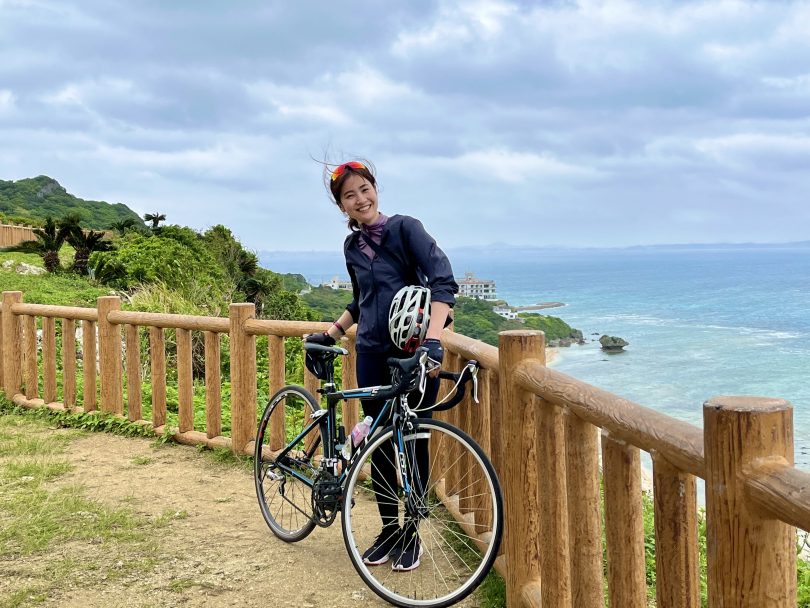
Some routes may not have frequent vending machines or convenience stores, so be sure to bring a drink and a minimum supply of food. I found dried pineapple purchased at a local souvenir shop to be very useful.
Course Introduction
▼Ryugaku Rental Cycle
http://cycle.sunnyday.jp/rental/
▼Valley of Gangala
https://gangala.com/
▼Nakamoto Fresh Fish Tempura Restaurant
https://nakamotosengyoten.com/
▼Café Mori no Terrace
https://www.okinawastory.jp/gourmet/600010919
▼Nilai Bridge and Kanai Bridge
https://www.kankou-nanjo.okinawa/bunka/details/171
Summary
I enjoyed my first trip to the main island of Okinawa on foot, on a bus tour, and by bicycle. I felt the greatest satisfaction and sense of accomplishment traveling by bicycle, as I could go farther on my own.
By riding a bicycle, you can feel the ups and downs of the terrain, the sea breeze, the humidity, and the change of scenery from town to farming and cattle ranching areas. A little bit of rain and wind is also a part of nature-based activity. After you have managed to complete the ride, you will feel more confident in yourself.
You don’t have to spend your entire trip riding a bike. But if you add cycling to your trip, you will be surprised at the adventures that await you.


